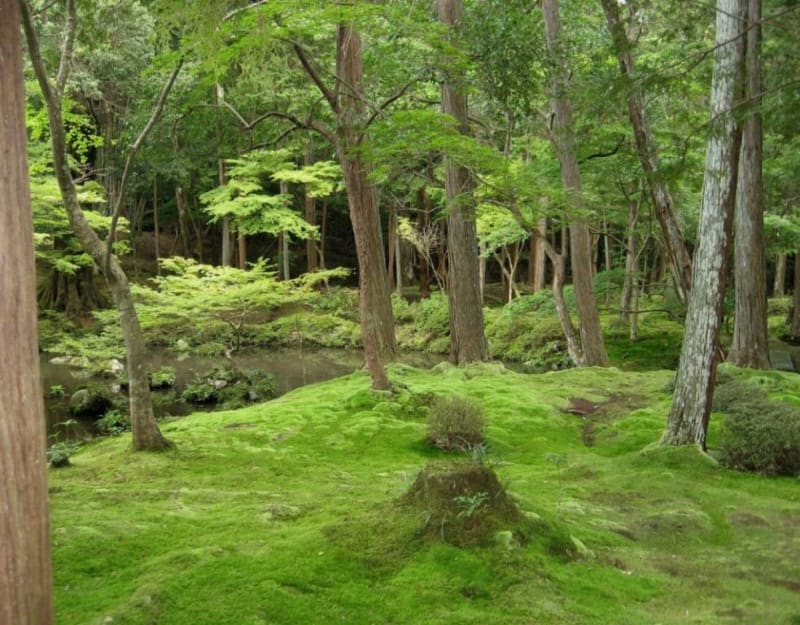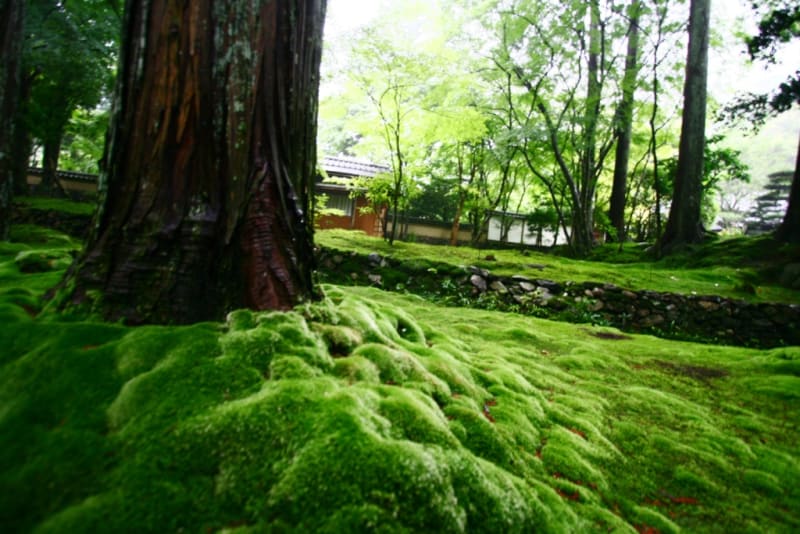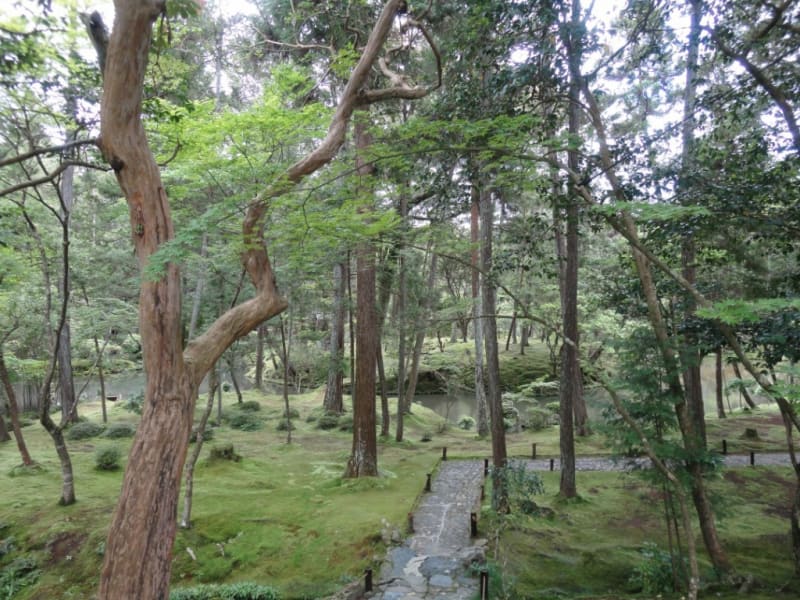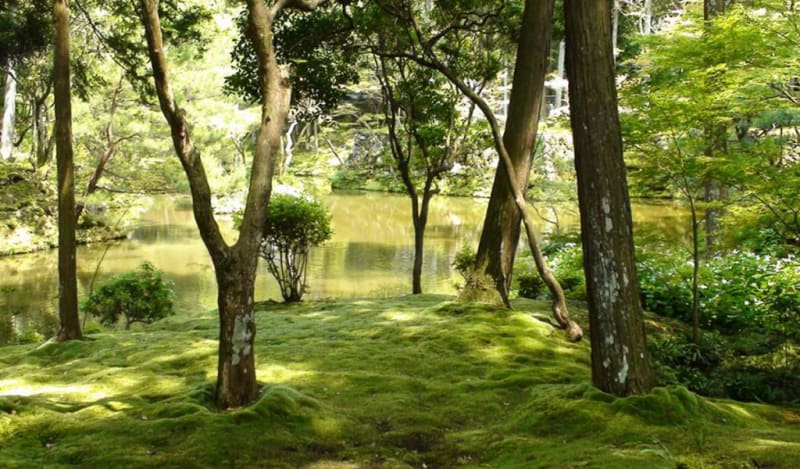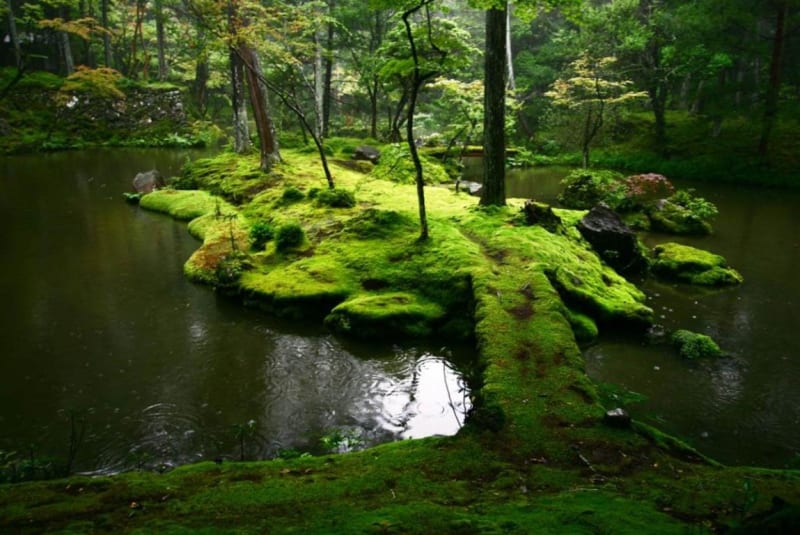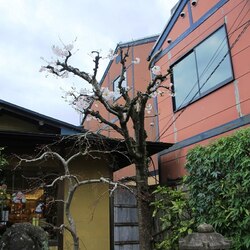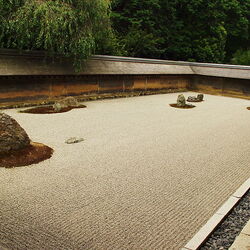Saihō-ji
In the middle of Japan, namely in its old capital with the name Kyoto, there is a magnificent Saihoji moss garden, which is a real attraction of the whole country and has another name – the moss garden. This amazing landscaped park was formed near the Kokedera Temple, which carries the Buddhist religion. The temple structure was erected by the monk Geki back in the time of Nara, which falls on 710-794 years.
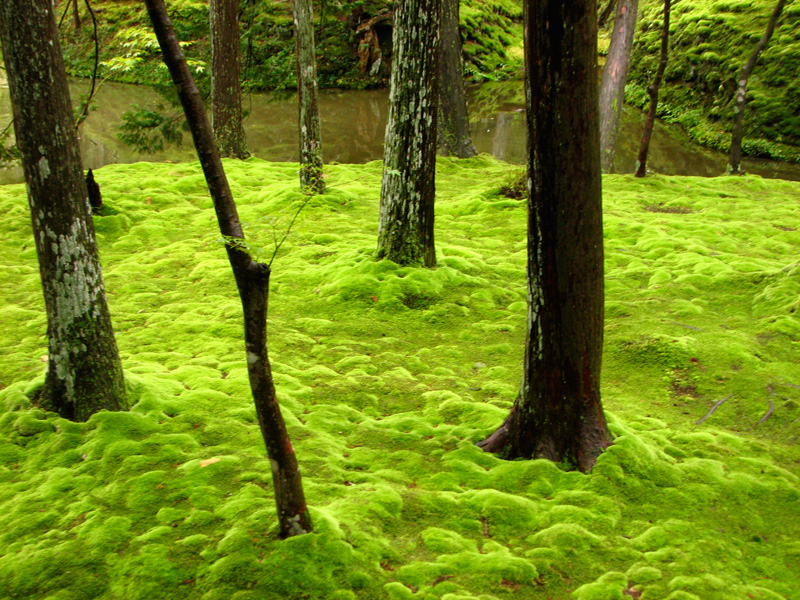
Even at that time, the beautiful temple was surrounded by a garden that had ponds. In these small lakes, among the trees, you could take a boat ride or moor to the island and relax in a specially designed gazebo.
But, unfortunately, the garden was destroyed when the merciless wars took place here. These structures passed through the flames of fire and were flooded with water. A talented gardener took over the restoration of the Lower Garden in 1339. This famous monk, a horticulturist named Muso Soseki, did not have time to finish what he had started, but his capable students managed to support the local beauty.
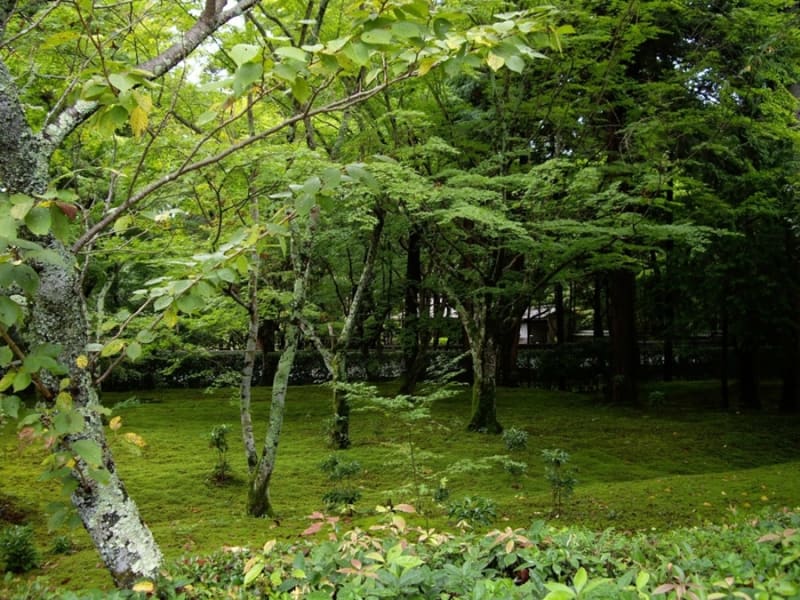
The entire Saihoji Moss Garden has many different symbols that are understandable to people who know Japanese, as well as the culture of the country.
There is even a small pond in the shape of a hieroglyph, which is complemented by three small islands. It will seem natural to an ordinary person, but knowledgeable people here can see the symbol of the "heart", which means connection with natural resources.
There is also a stone waterfall, which is about 600 years old. The entire Saihoji Park is divided into two levels – lower and upper. The upper one is dominated by a rock garden, and the entire lower one is dedicated to mosses. The variety of hand-planted plants is simply stunning. The laconic compositions complement each other, harmoniously fitting into the overall picture.
Mosses, which are an integral part of the modern Saihoji Garden, were not provided for in the original project. Previously, the entire space that belongs to them today was covered with white sand. Mosses began to appear here on their own around the Meiji era, when financing for garden maintenance was not at the proper level. But, in the future, the Japanese liked the idea of covering the garden with a fluffy blanket. These unusual dotted patches of trees have created a unique garden masterpiece, which is very popular among tourists. At least 130 species of moss can be counted in this place. Literally everything here, from trunks, stumps to rocks and trails, is covered with a gorgeous natural carpet of flowering moss.
Travelers are particularly attracted to the so-called "stone of contemplation", which was named with the help of the local ruler of the XIV century, Ashikaga Yoshimitsu, who liked to sit on this particular stone to admire the garden. He was strongly attracted and inspired by this amazing place.
The Saihoji Moss Garden has been inaccessible to ordinary visitors for a very long time. The influx of numerous tourists from all over the world had a negative impact on the condition and appearance of the park, especially the mosses. Considering this factor, the government decided to close the garden from publicity, and after it was taken under UNESCO protection.
In order to taste the park, it is necessary to send a letter in advance indicating the desired date of the visit and the return address. The monastery, reviewing the letters, decides for itself whether to give you permission or not. If the answer is yes, then you will definitely receive an approving response. However, upon arrival in Kyoto, you will need to pay for admission to the Saihoji Garden, which is approximately $30.
